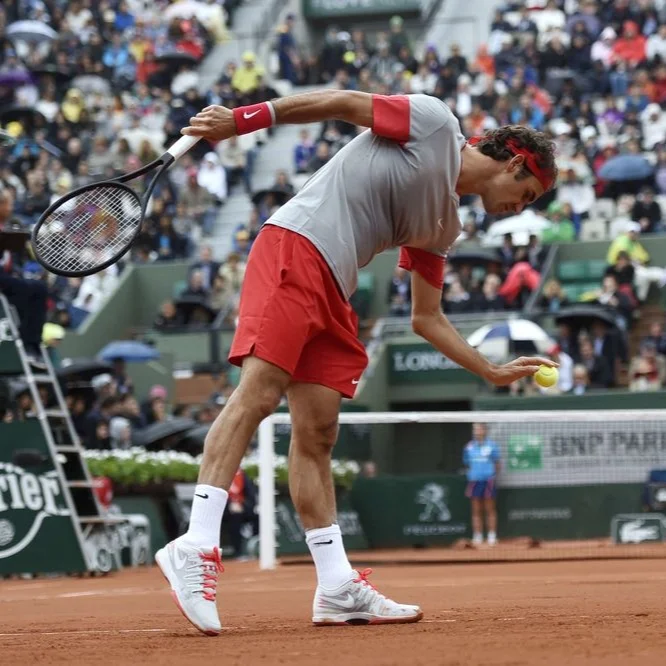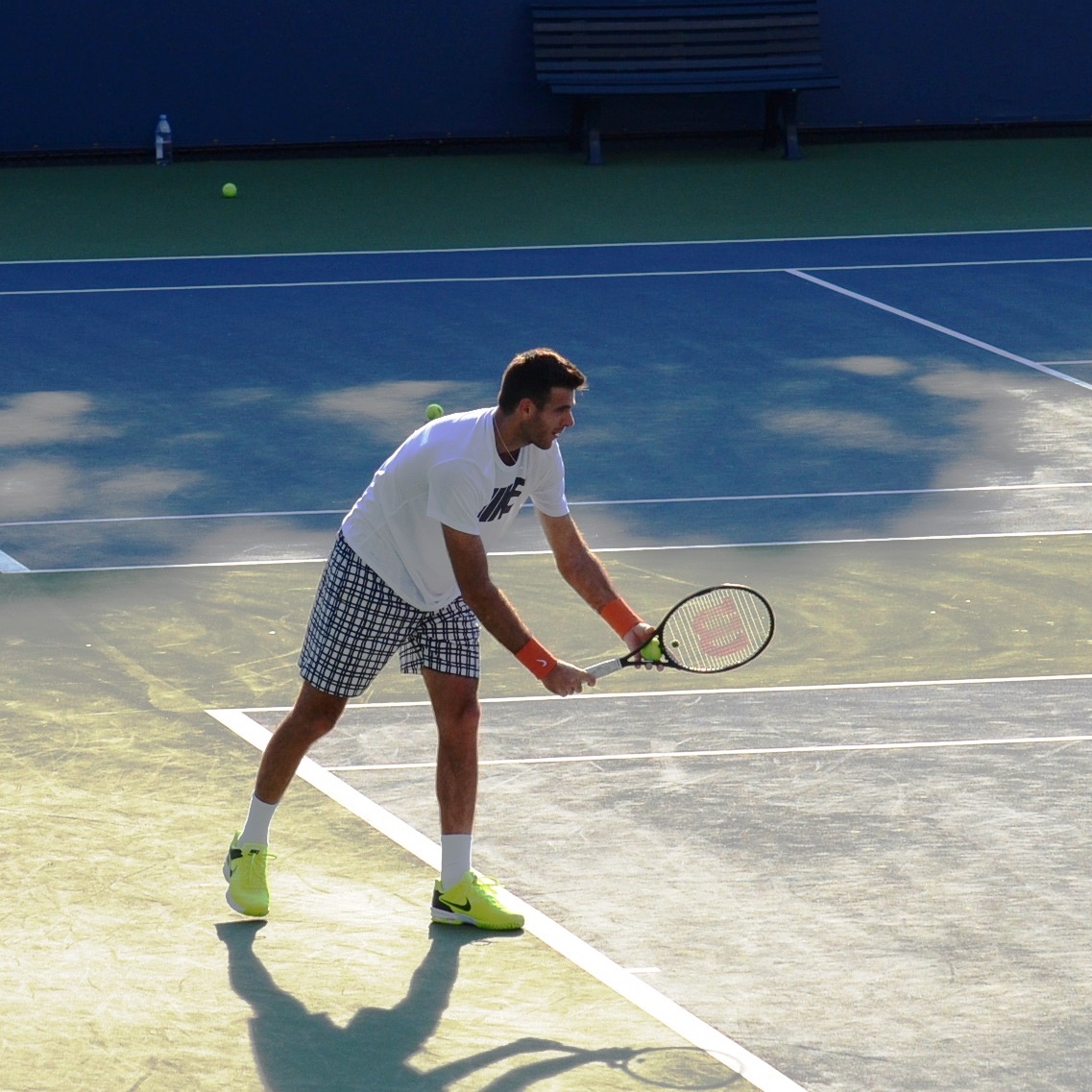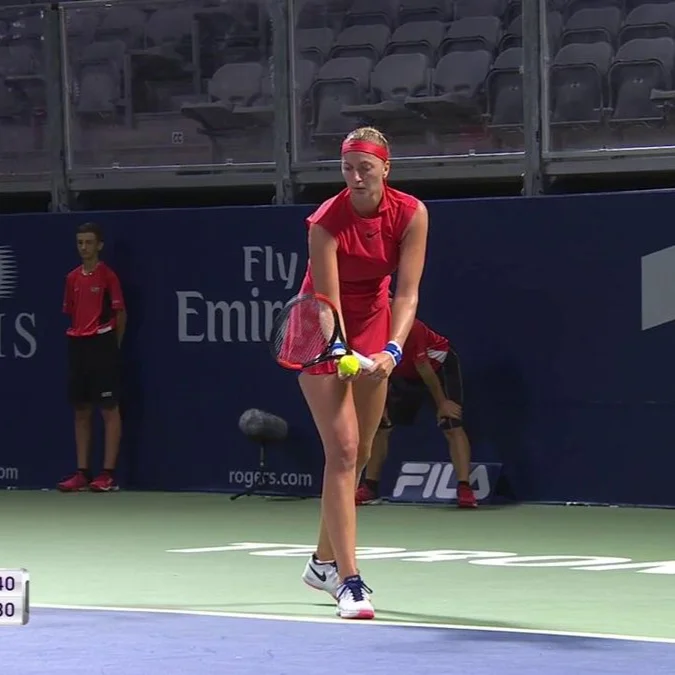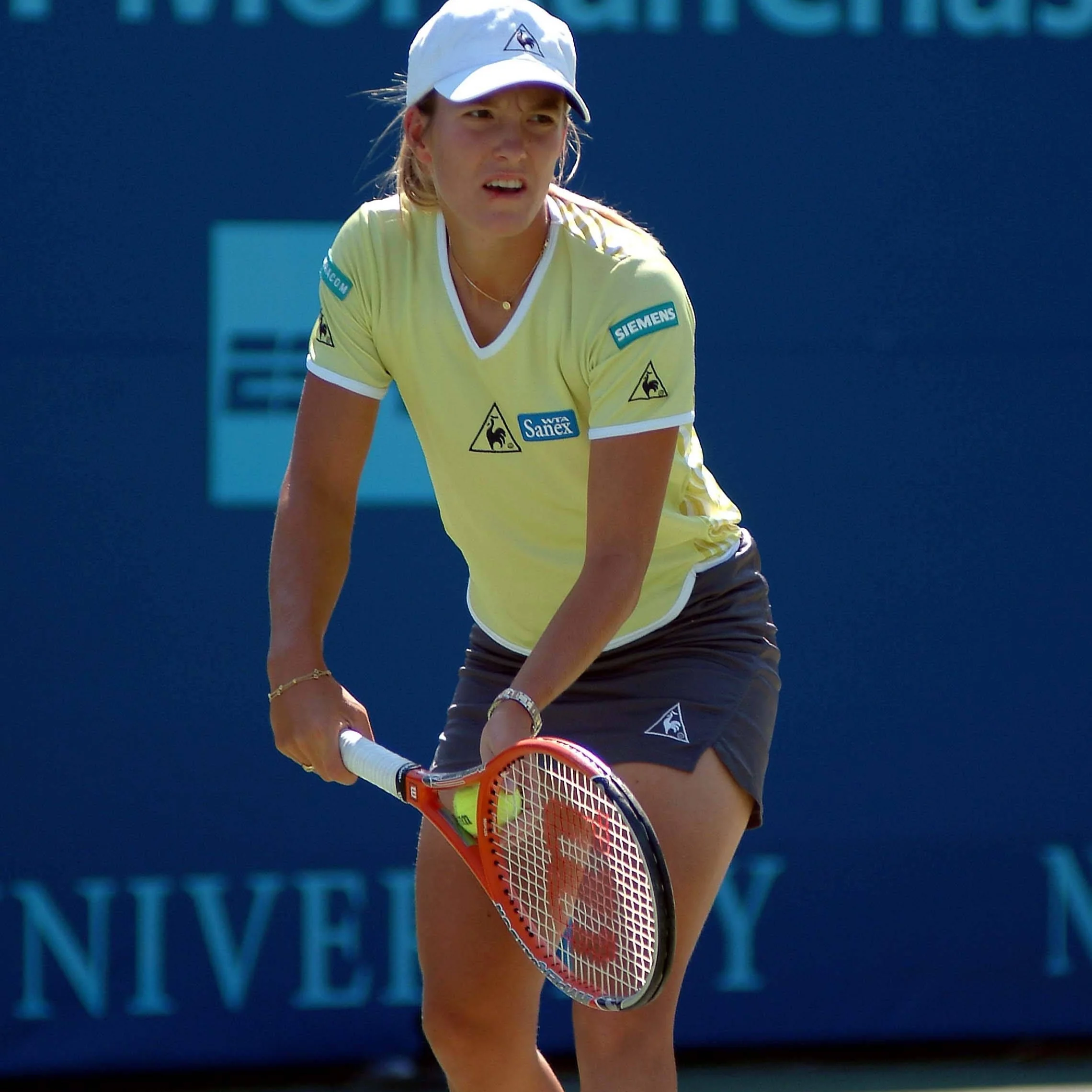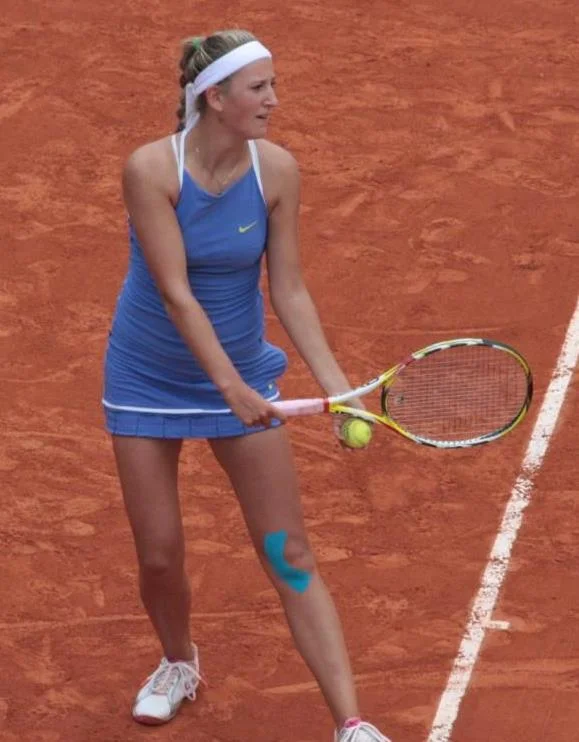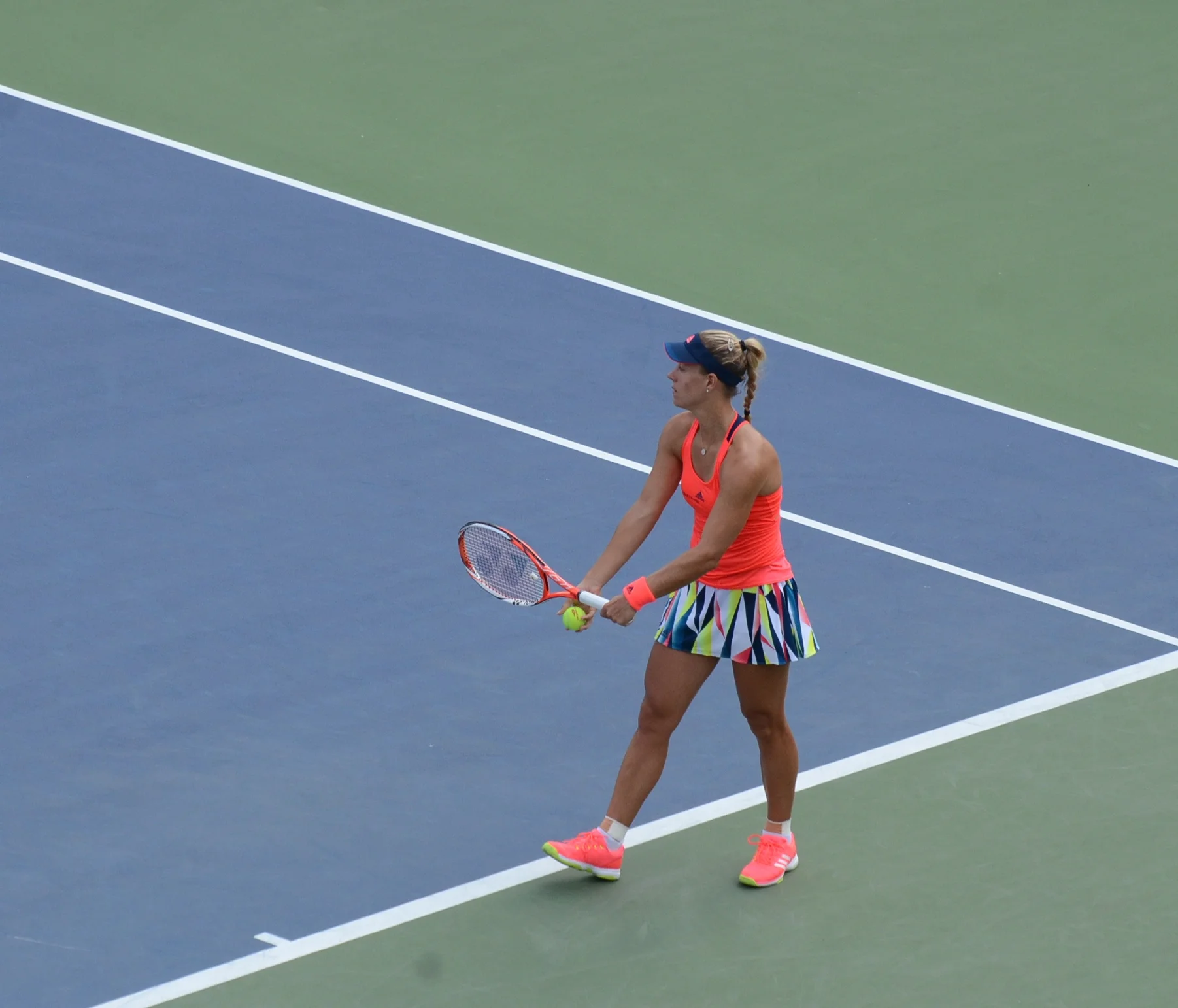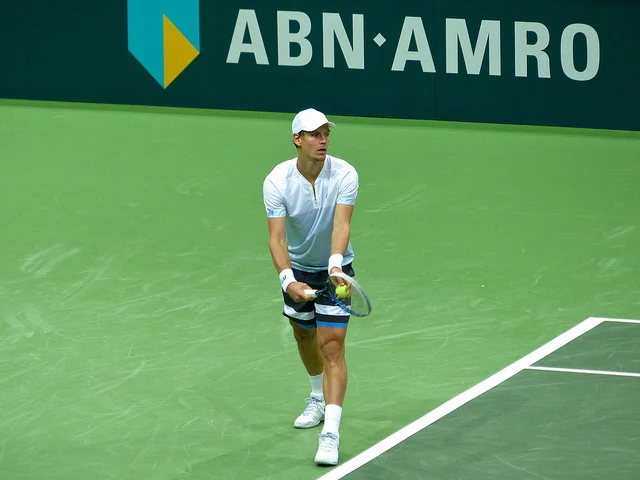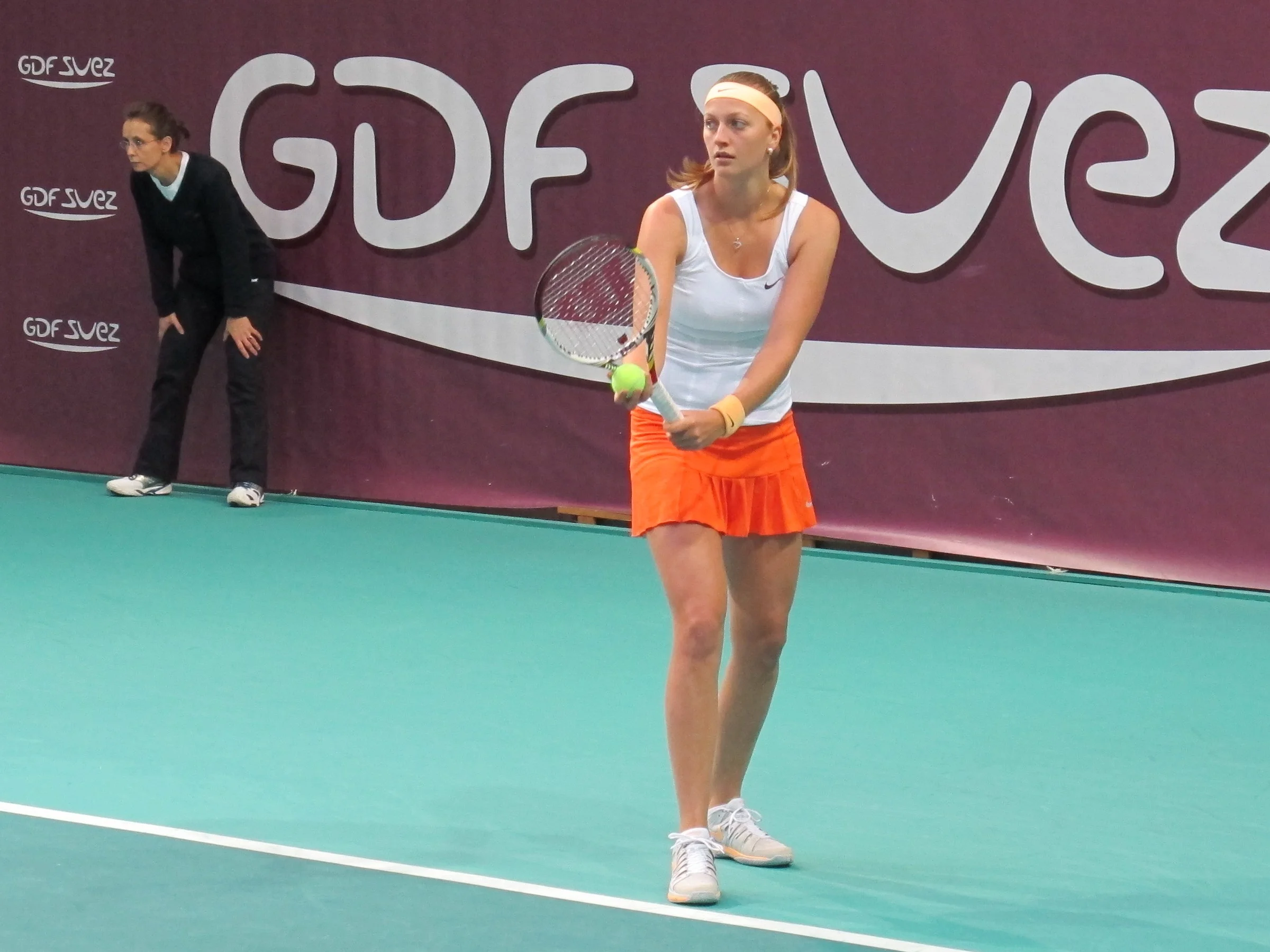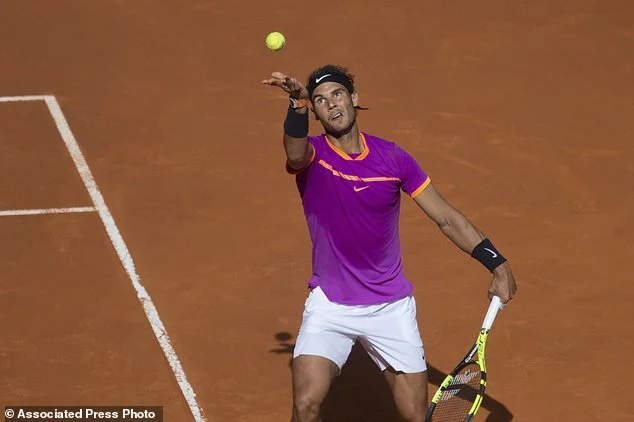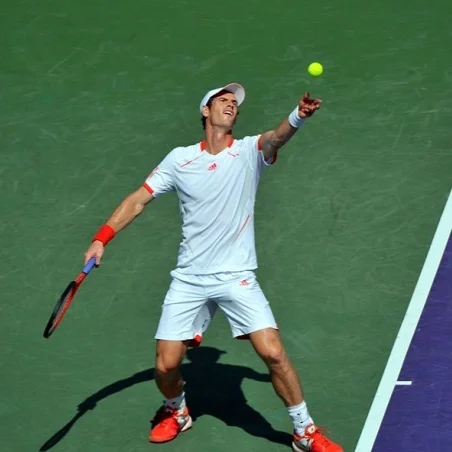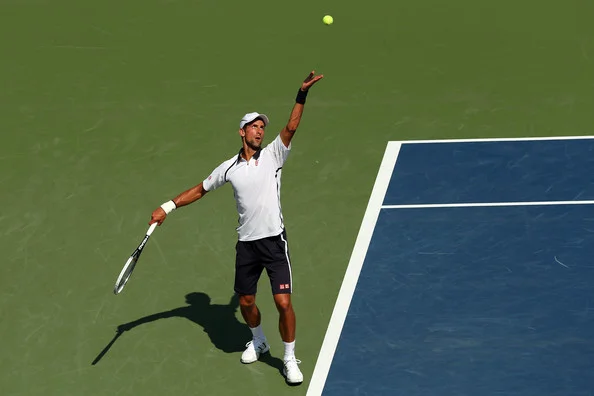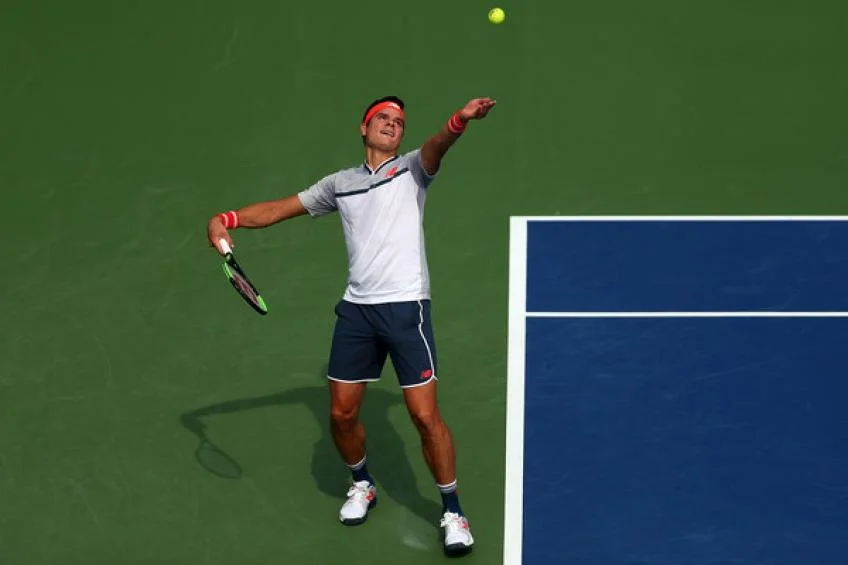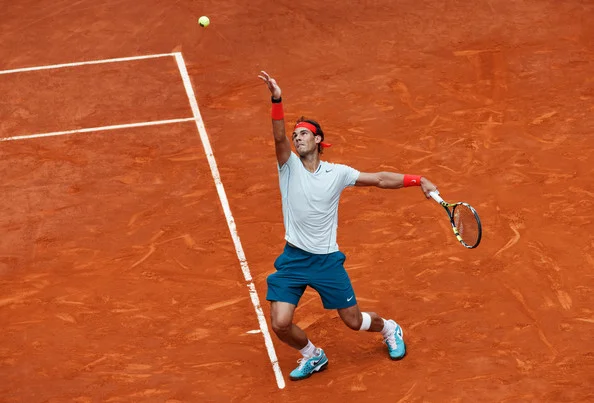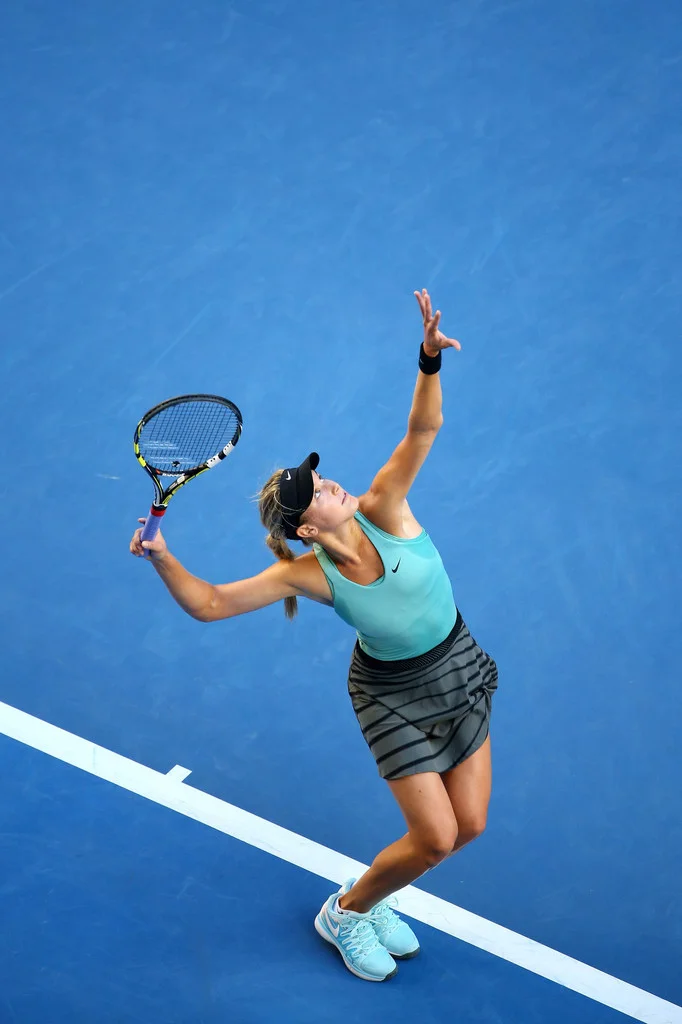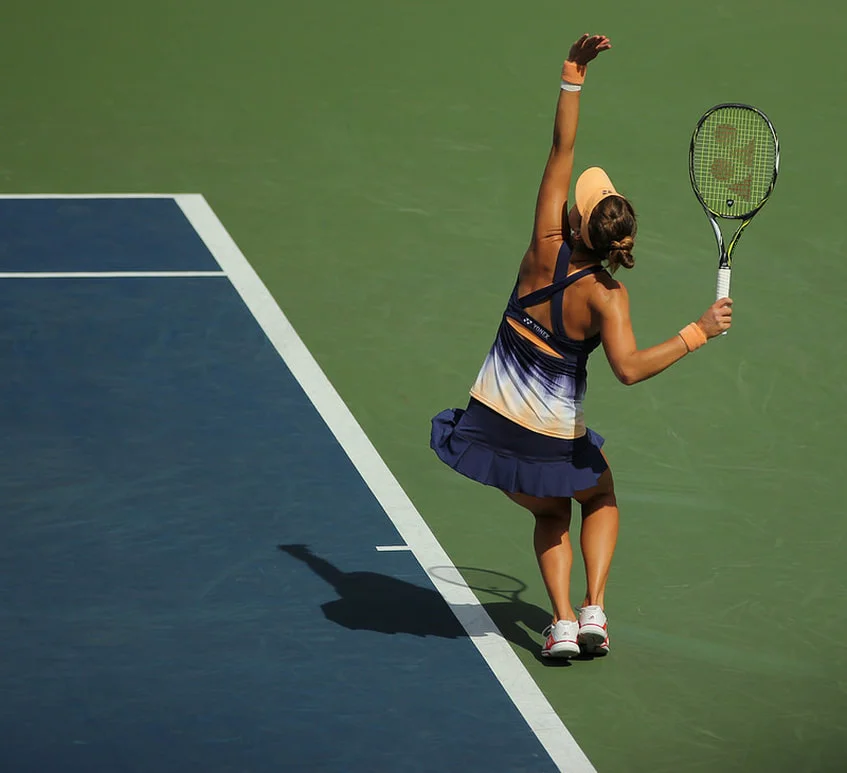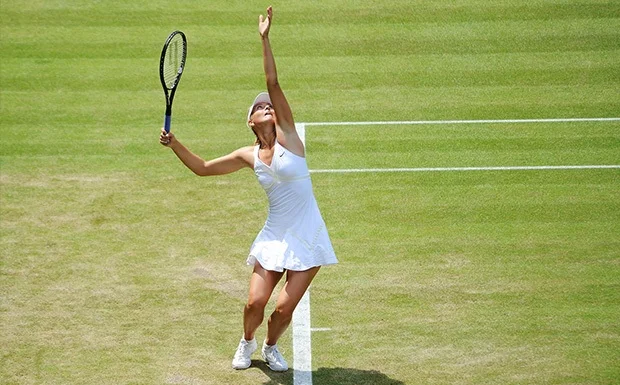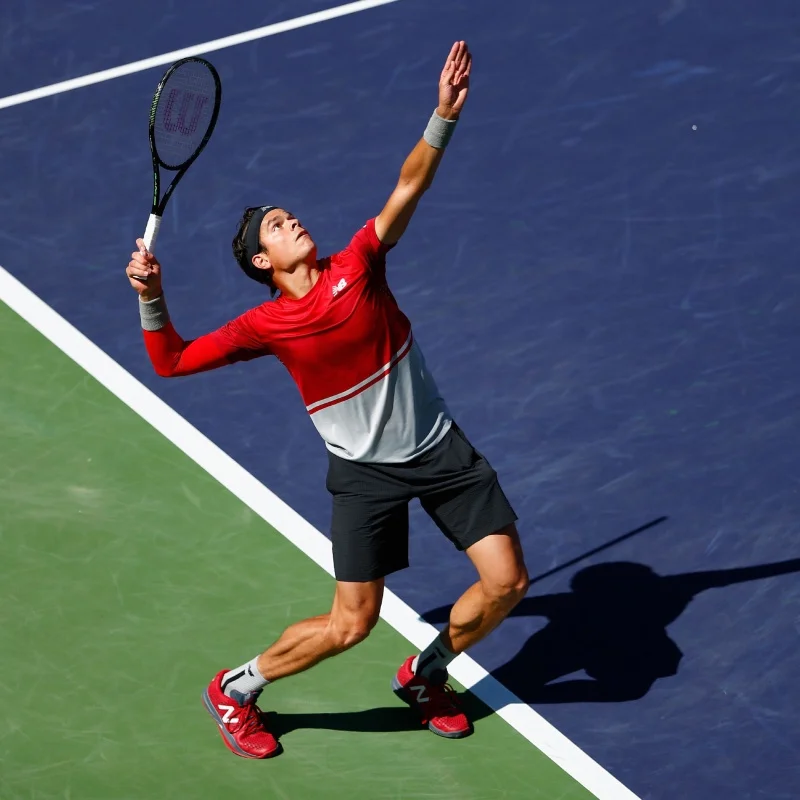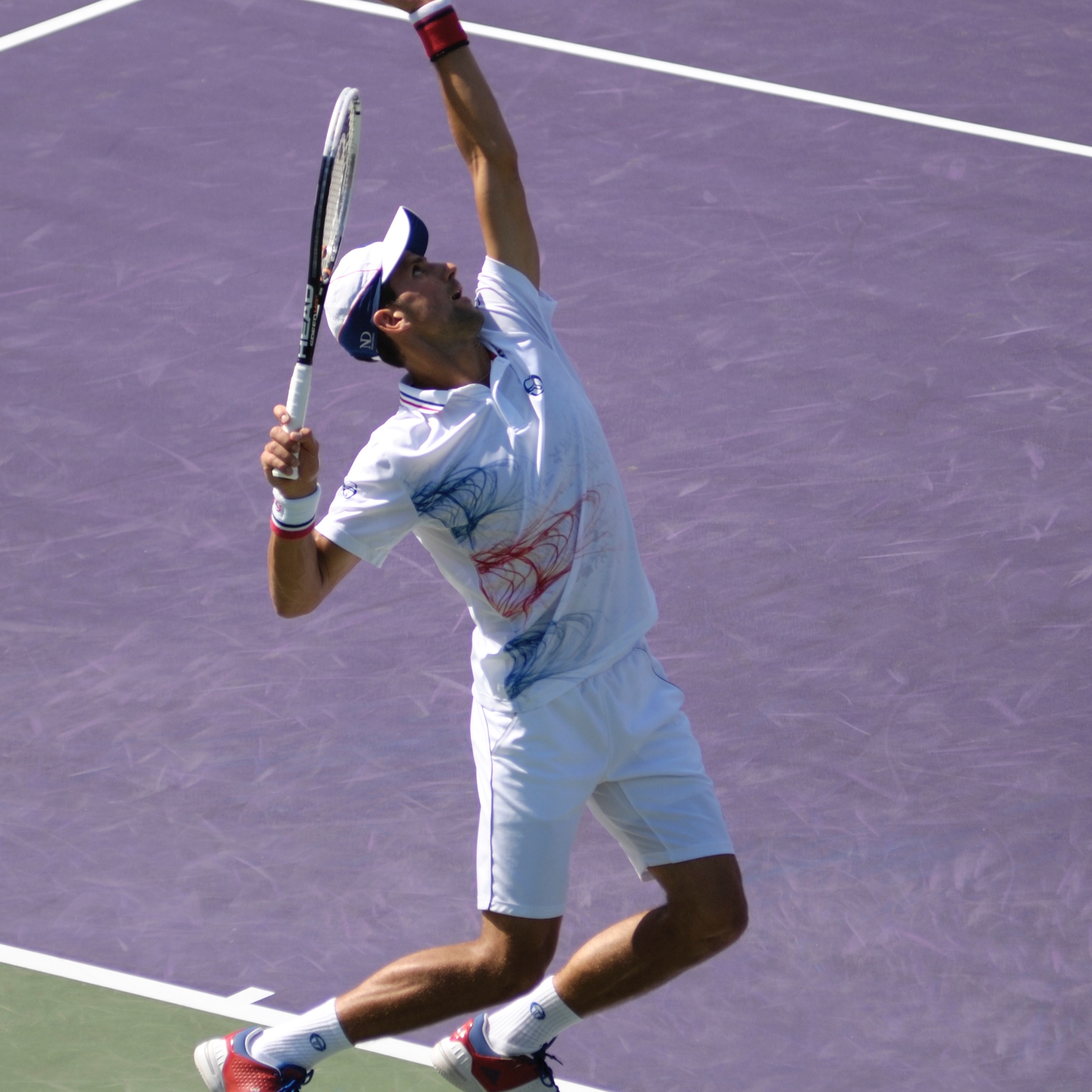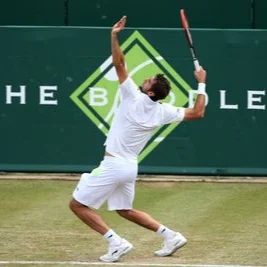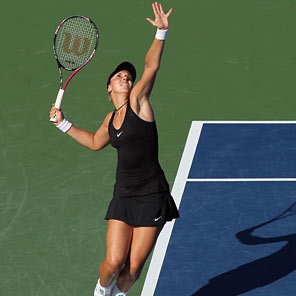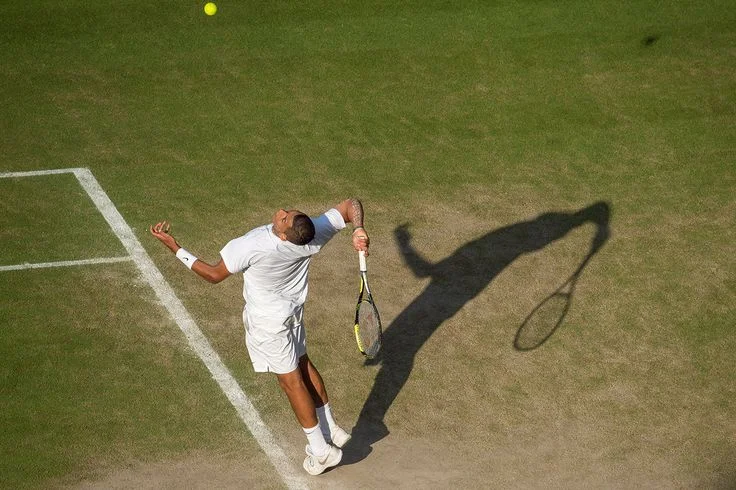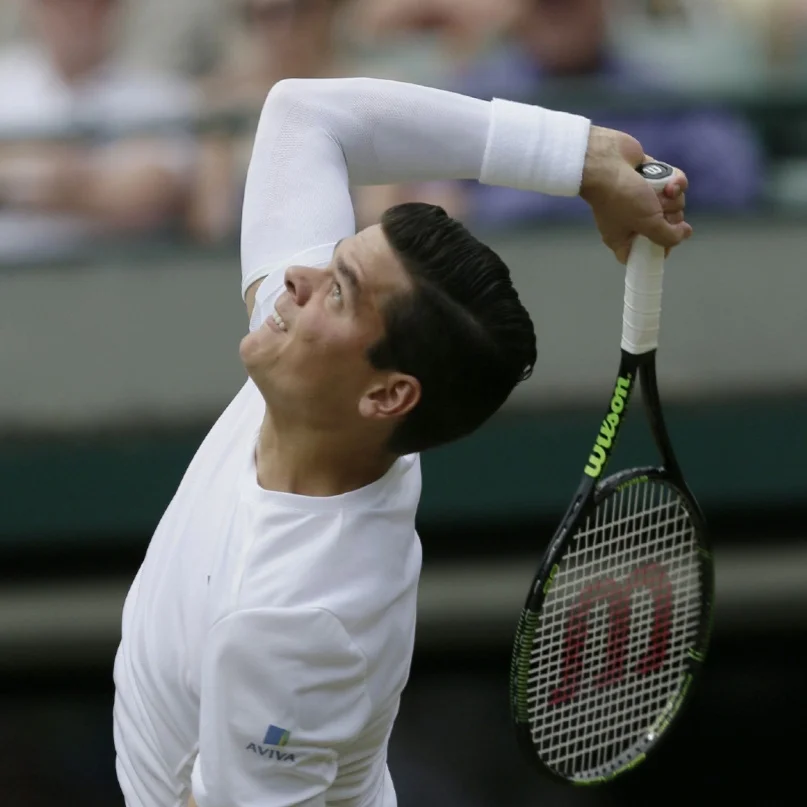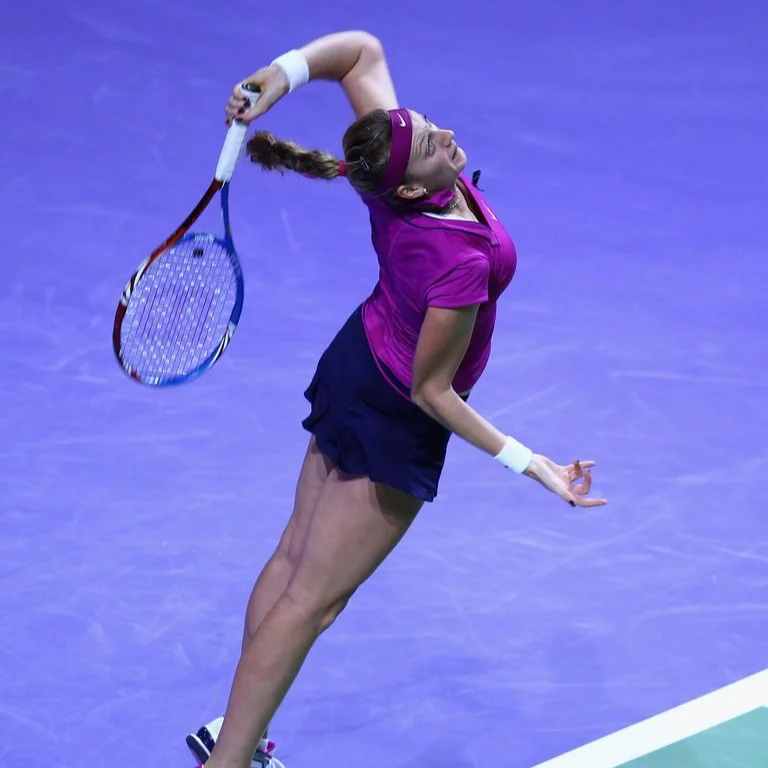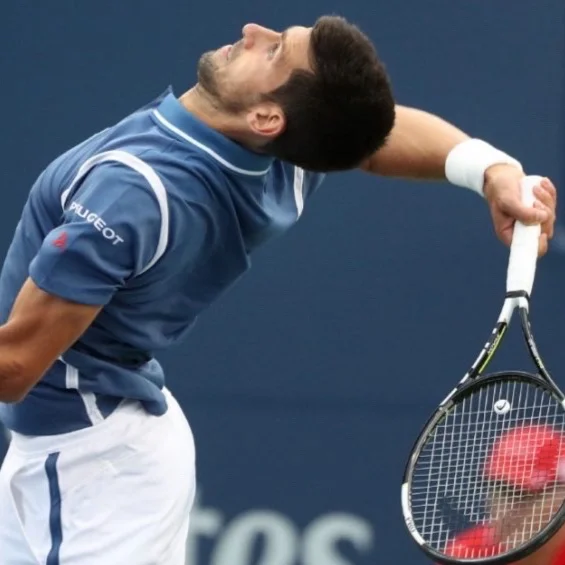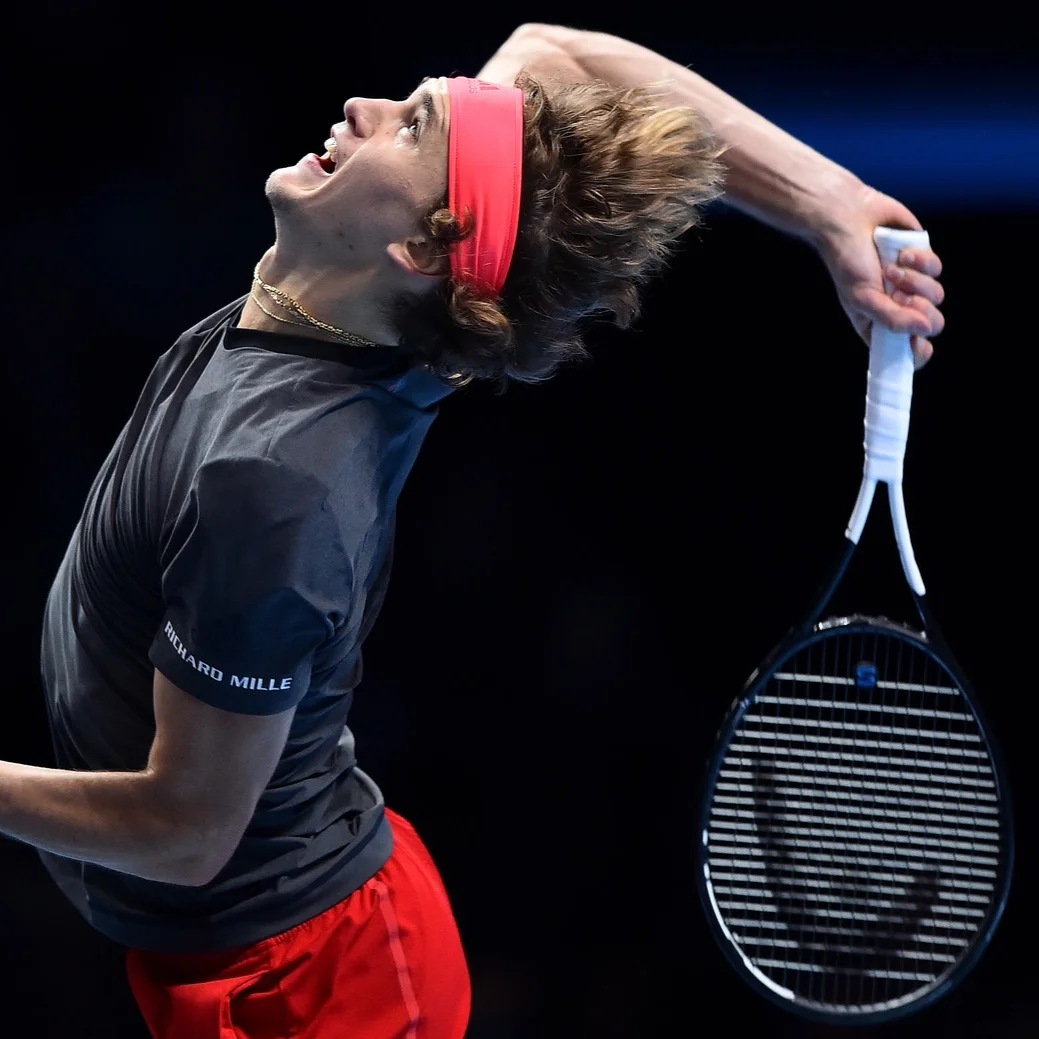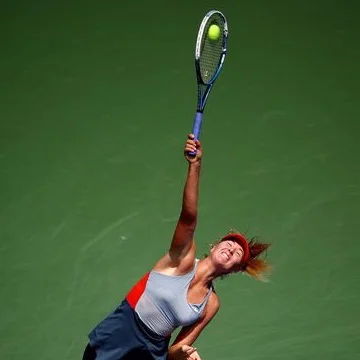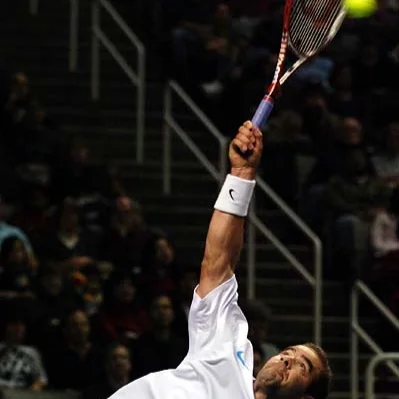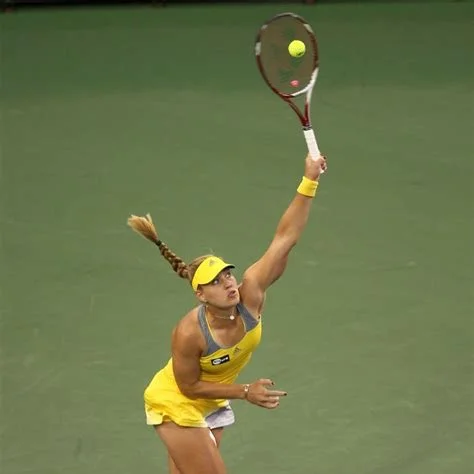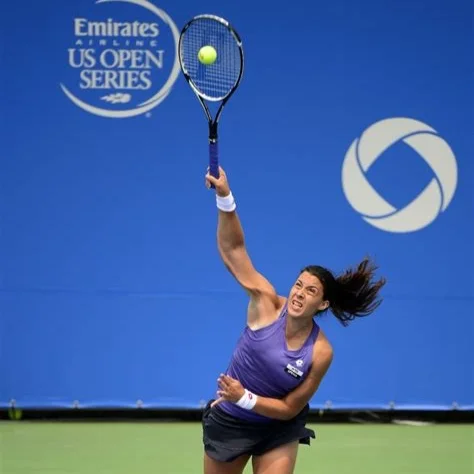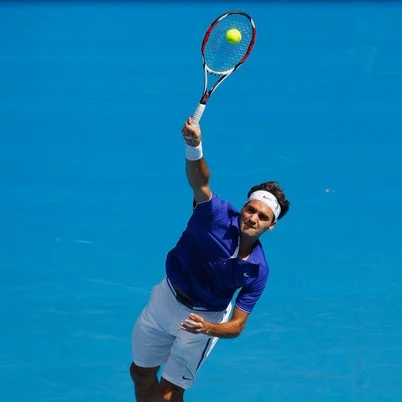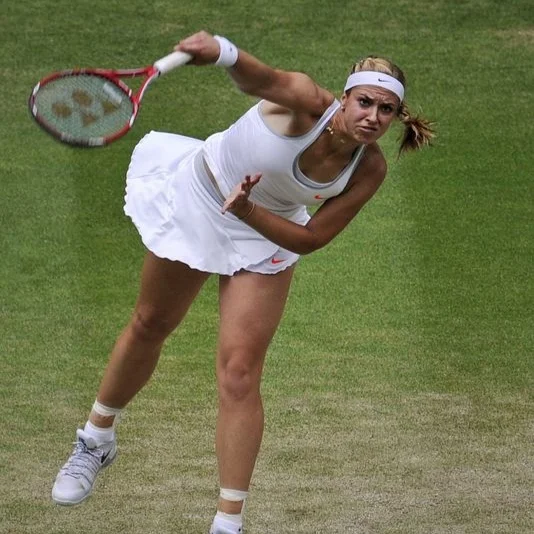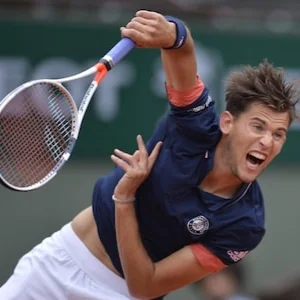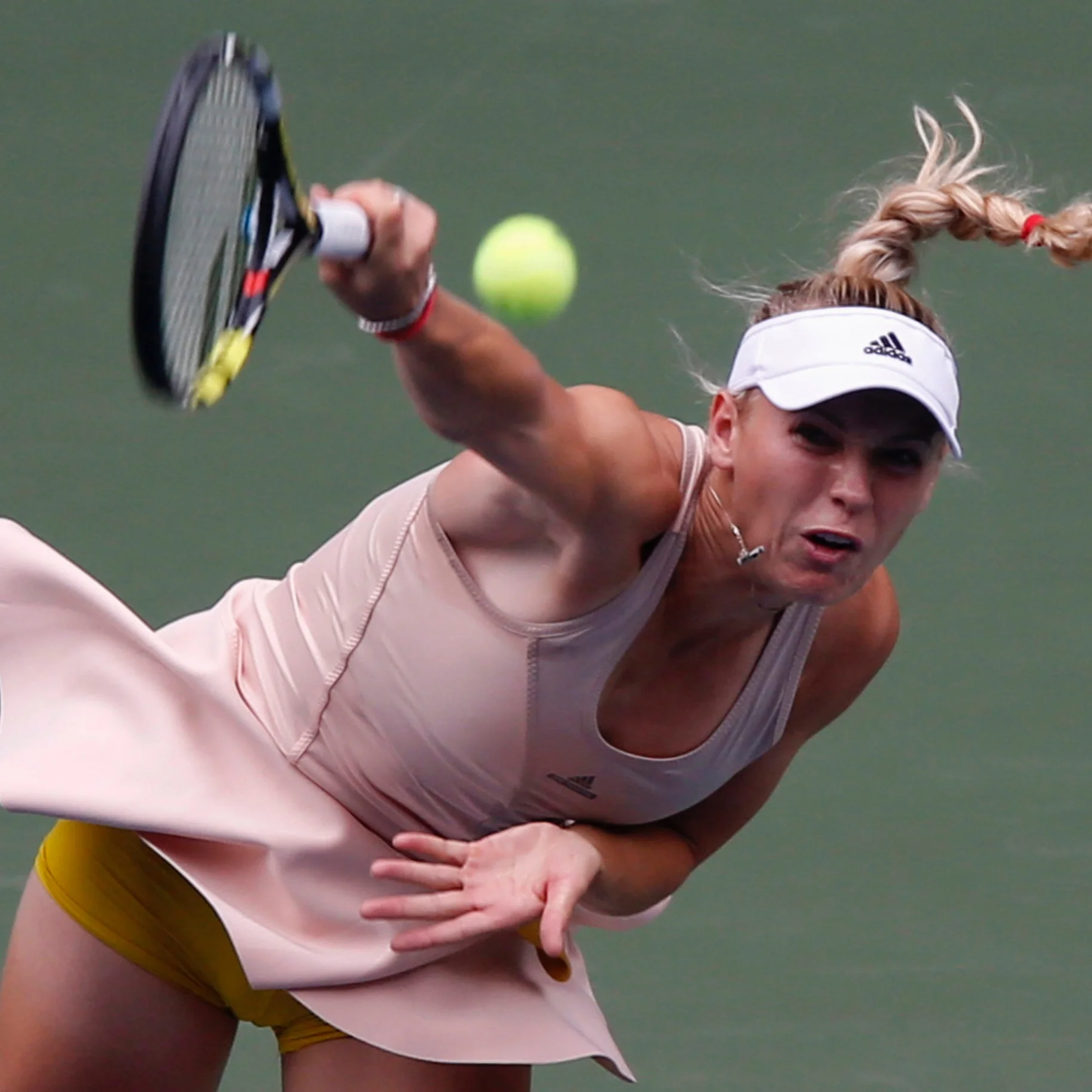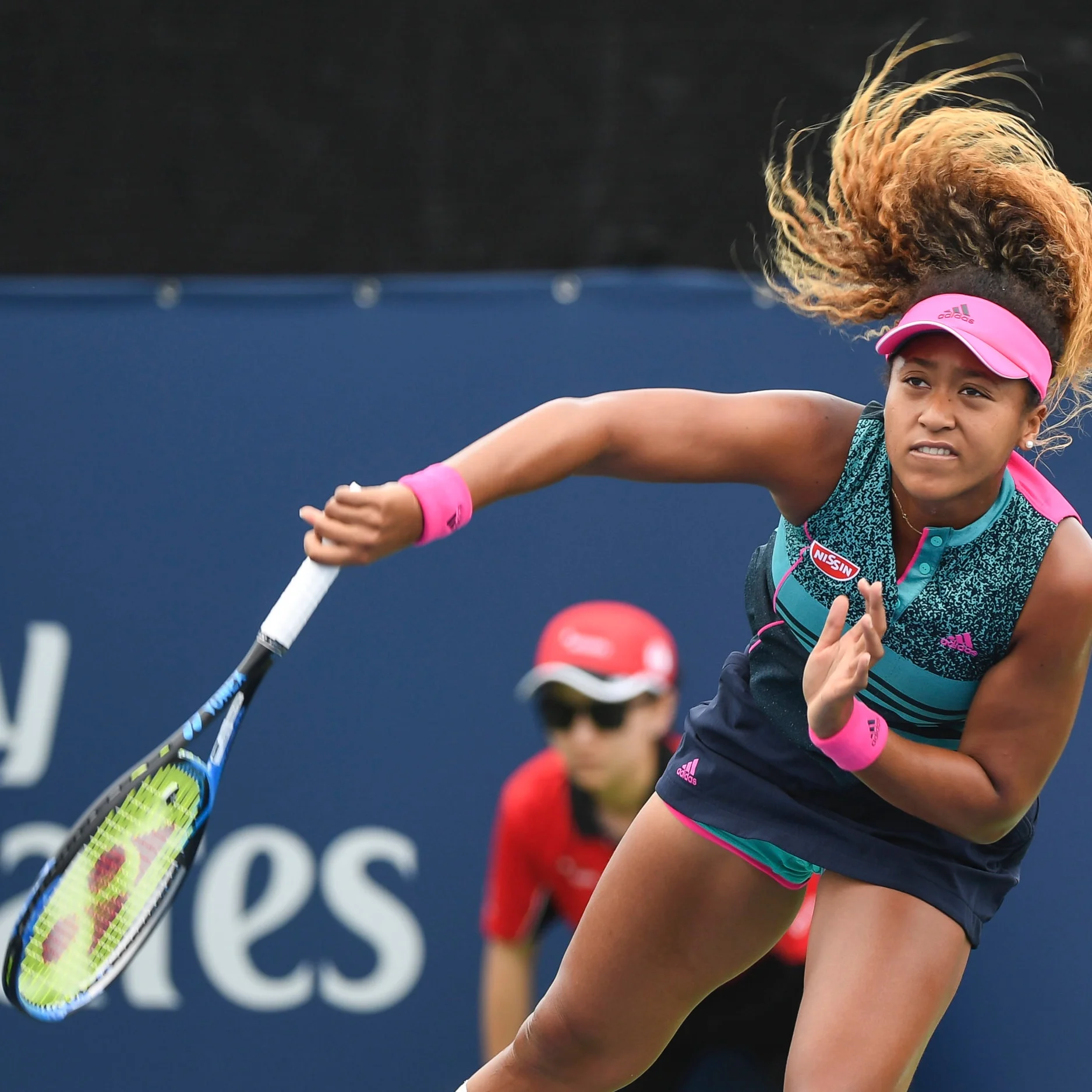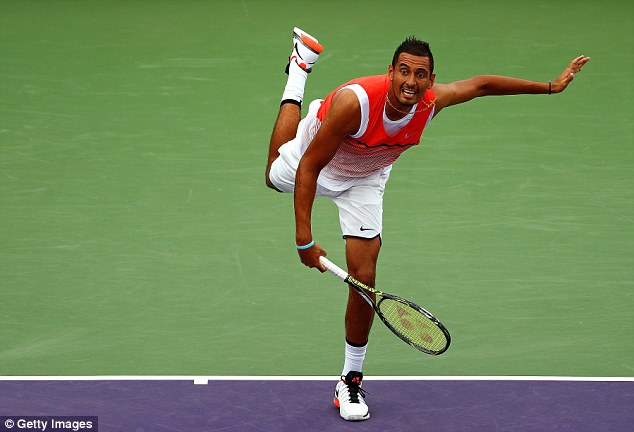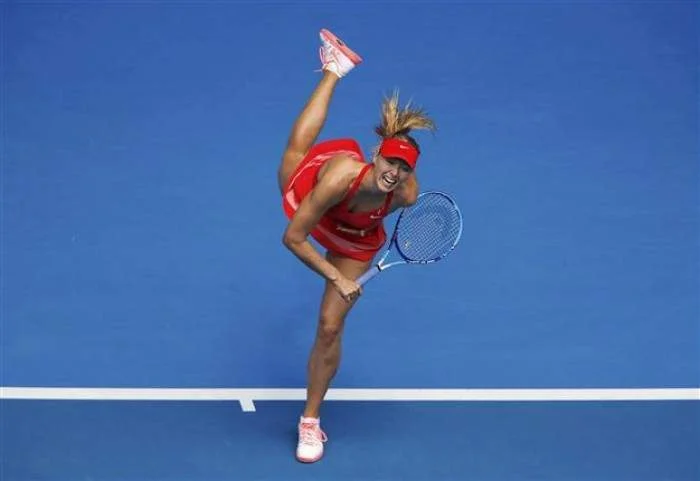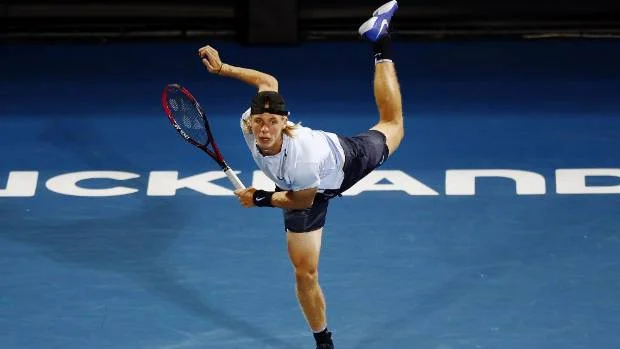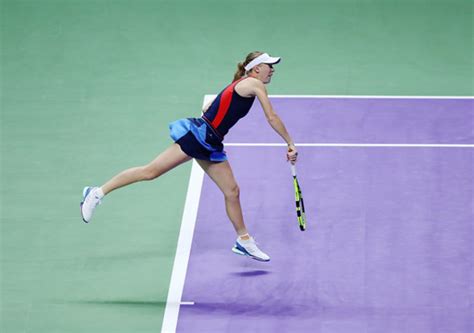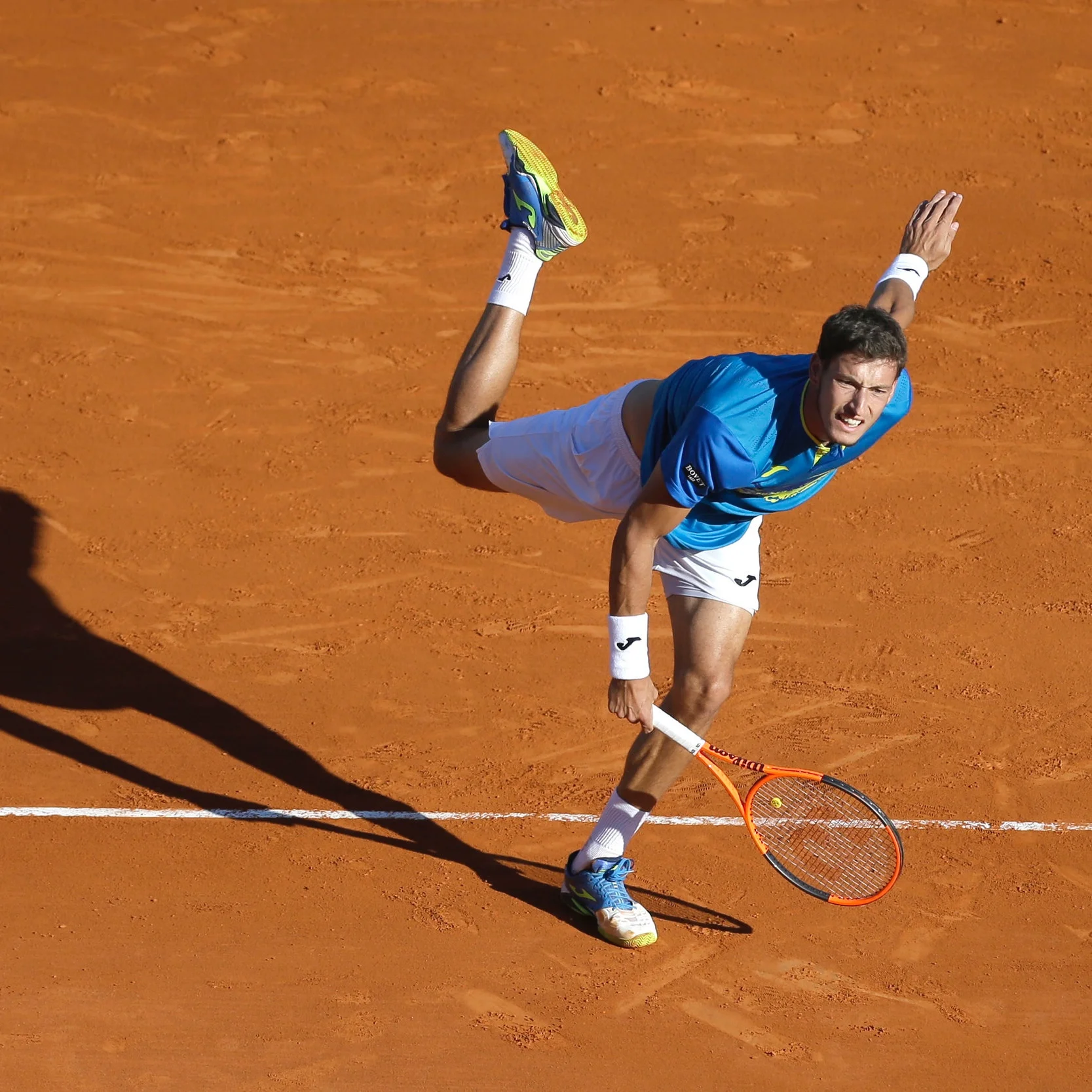Here is the optimal start to a serve.
1) continental grip with the wrist tilted up towards you
2) full body weight is on the left leg (for a righty)
3) both hands are on the racket (gives right hand rest because left one basically holds the entire weight of the racket)
4) shoulders are fully turned sideways
5) back foot is behind and to the left of the front foot (securing the ability to coil later on)
Here are a few more examples.
Shifting the weight from the front foot to the back.
1) both hands are still on the racket although they can start disconnecting
2) shoulders stay turned
3) front toe frequently gets of the ground
More examples (it was hard to find good pictures of this phase, but if you slo-mo any high-level serve, you will be able to clearly see that it is in fact there):
Toss and body shift inside the court
1) racket angle remains the same as the beginning
2) arms go separate ways
3) body begins coiling away from the net
3) tossing arm stays straight throughout the toss motion
More examples of this:
Trophy pose
1) feet can come together (pinpoint) or stay in the same distance they were in the beginning (platform). Both equally correct
2) racket face is still tilted in the same angle it was in the very beginning
3) elbow is off the body
4) tossing shoulder all the way up, hitting shoulder all the way down.
5) tossing arm all the way vertical
6) hips inside the court, creating C shape
7) shoulders turn further away from the court, the opponent should see some of your back
8) knees bent
9) rackets stands up vertically
More examples of this phase.
Racket drop
1) racket drops all the way down behind the back
2) tossing arm gets out of the way
3) rackets still angled, like you are trying to hit the ball with your frame
Here are the different angles of this phase:
Contact point
1) hitting arm fully extended
2) should be done while in the air
3) contact point in front of the body (1st serve)
Here are more examples:
Pronation
1) Happens while the player is off the ground
2) Essential for generating power
3) Wrist turns the racket forward and to the right, extending followthrough stage
More examples of this phase from different angles.
Finish
1) Usually, the player lands about 1-1.5 ft inside the court on the their opposite from their hitting arm leg (righty will land on the left foot)
2) Back leg kicks back
3) The entire weight is on the landing leg creating imbalance. One of the rare cases where it is the proper from to be out of balance.
4) Racket swings down and across the body ending up on the opposite side of the start (righty will finish on the left of the knees)
Here are a few more examples:

